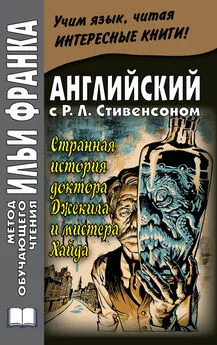Steven Dubner - Freakonomics
- Название:Freakonomics
- Автор:
- Жанр:
- Издательство:неизвестно
- Год:неизвестен
- ISBN:нет данных
- Рейтинг:
- Избранное:Добавить в избранное
-
Отзывы:
-
Ваша оценка:
Steven Dubner - Freakonomics краткое содержание
Freakonomics - читать онлайн бесплатно полную версию (весь текст целиком)
Интервал:
Закладка:
The gang members started arguing over what should be done with Venkatesh.
Let him go? But if he did tell the rival gang about this stairwell hangout, they’d be susceptible to a surprise attack. One jittery kid kept wagging something back and forth in his hands—in the dimming light, Venkatesh eventually realized it was a gun—and muttering, “Let me have him, let me have him.” Venkatesh was very, very scared.
The crowd grew, bigger and louder. Then an older gang member appeared. He snatched the clipboard from Venkatesh’s hands and, when he saw that it was a written questionnaire, looked puzzled.
“I can’t read any of this shit,” he said.
“That’s because you can’t read,” said one of the teenagers, and everyone laughed at the older gangster.
He told Venkatesh to go ahead and ask him a question from the survey.
Venkatesh led with the how-does-it-feel-to-be-black-and-poor question. It was met with a round of guffaws, some angrier than others. As Venkatesh would later tell his university colleagues, he realized that the multiple-choice answers A through E were insufficient. In reality, he now knew, the answers should have looked like this:
1. Very bad
2. Bad
3. Neither bad nor good
4. Somewhat good
5. Very good
6. Fuck you
Just as things were looking their bleakest for Venkatesh, another man appeared.
This was J. T., the gang’s leader. J. T. wanted to know what was going on. Then he told Venkatesh to read him the survey question. He listened but then said he couldn’t answer the question because he wasn’t black.
“Well then,” Venkatesh said, “how does it feel to be African American and poor?”
“I ain’t no African American either, you idiot. I’m a nigger.” J. T. then administered a lively though not unfriendly taxonomical lesson in “nigger”
versus “African American” versus “black.” When he was through, there was an awkward silence. Still nobody seemed to know what to do with Venkatesh. J. T., who was in his late twenties, had cooled down his subordinates, but he didn’t seem to want to interfere directly with their catch. Darkness fell and J. T. left.
“People don’t come out of here alive,” the jittery teenager with the gun told Venkatesh. “You know that, don’t you?”
As night deepened, his captors eased up. They gave Venkatesh one of their beers, and then another and another. When he had to pee, he went where they went—
on the stairwell landing one floor up. J. T. stopped by a few times during the night but didn’t have much to say. Daybreak came and then noon. Venkatesh would occasionally try to discuss his survey, but the young crack dealers just laughed and told him how stupid his questions were. Finally, nearly twenty-four hours after Venkatesh stumbled upon them, they set him free.
He went home and took a shower. He was relieved but he was also curious. It struck Venkatesh that most people, including himself, had never given much thought to the daily life of ghetto criminals. He was now eager to learn how the Black Disciples worked, from top to bottom.
After a few hours, he decided to walk back to the housing project. By now he had thought of some better questions to ask.
Having seen firsthand that the conventional method of data gathering was in this case absurd, Venkatesh vowed to scrap his questionnaire and embed himself with the gang. He tracked down J. T. and sketched out his proposal. J. T. thought Venkatesh was crazy, literally—a university student wanting to cozy up to a crack gang? But he also admired what Venkatesh was after. As it happened, J. T.
was a college graduate himself, a business major. After college, he had taken a job in the Loop, working in the marketing department of a company that sold office equipment. But he felt so out of place there—like a white man working at Afro Sheen headquarters, he liked to say—that he quit. Still, he never forgot what he learned. He knew the importance of collecting data and finding new markets; he was always on the lookout for better management strategies. It was no coincidence, in other words, that J. T. was the leader of this crack gang. He was bred to be a boss.
After some wrangling, J. T. promised Venkatesh unfettered access to the gang’s operations as long as J. T. retained veto power over any information that, if published, might prove harmful.
When the yellow-gray buildings on the lakefront were demolished, shortly after Venkatesh’s first visit, the gang relocated to another housing project even deeper in Chicago’s south side. For the next six years, Venkatesh practically lived there.
Under J. T.’s protection he watched the gang members up close, at work and at home. He asked endless questions. Sometimes the gangsters were annoyed by his curiosity; more often they took advantage of his willingness to listen. “It’s a war out here, man,” one dealer told him. “I mean, every day people struggling to survive, so you know, we just do what we can. We ain’t got no choice, and if that means getting killed, well shit, it’s what niggers do around here to feed their family.”
Venkatesh would move from one family to the next, washing their dinner dishes and sleeping on the floor. He bought toys for their children; he once watched a woman use her baby’s bib to sop up the blood of a teenaged drug dealer who was shot to death in front of Venkatesh. William Julius Wilson, back at the U. of C., was having regular nightmares on Venkatesh’s behalf.
Over the years the gang endured bloody turf wars and, eventually, a federal indictment. A member named Booty, who was one rank beneath J. T., came to Venkatesh with a story. Booty was being blamed by the rest of the gang for bringing about the indictment, he told Venkatesh, and therefore suspected that he would soon be killed. (He was right.) But first Booty wanted to do a little atoning. For all the gang’s talk about how crack dealing didn’t do any harm—
they even liked to brag that it kept black money in the black community—Booty was feeling guilty. He wanted to leave behind something that might somehow benefit the next generation. He handed Venkatesh a stack of well-worn spiral notebooks—blue and black, the gang’s colors. They represented a complete record of four years’ worth of the gang’s financial transactions. At J. T.’s direction, the ledgers had been rigorously compiled: sales, wages, dues, even the death benefits paid out to the families of murdered members.
At first Venkatesh didn’t even want the notebooks. What if the Feds found out he had them—perhaps he’d be indicted too? Besides, what was he supposed to do with the data? Despite his math background, he had long ago stopped thinking in numbers.
Upon completing his graduate work at the University of Chicago, Venkatesh was awarded a three-year stay at Harvard’s Society of Fellows. Its environment of sharp thinking and bonhomie—the walnut paneling, the sherry cart once owned by Oliver Wendell Holmes—delighted Venkatesh. He went so far as to become the society’s wine steward. And yet he regularly left Cambridge, returning again and again to the crack gang in Chicago. This street-level research made Venkatesh something of an anomaly. Most of the other young Fellows were dyed-in-the-tweed intellectuals who liked to pun in Greek.
One of the society’s aims was to bring together scholars from various fields who might not otherwise have occasion to meet. Venkatesh soon encountered another anomalous young Fellow, one who also failed the society stereotype. This one happened to be an economist who, instead of thinking grand macro thoughts, favored his own list of offbeat micro curiosities. At the very top of his list was crime. And so, within ten minutes of their meeting, Sudhir Venkatesh told Steven Levitt about the spiral notebooks from Chicago and they decided to collaborate on a paper. It would be the first time that such priceless financial data had fallen into an economist’s hands, affording an analysis of a heretofore uncharted criminal enterprise.
So how did the gang work? An awful lot like most American businesses, actually, though perhaps none more so than McDonald’s. In fact, if you were to hold a McDonald’s organizational chart and a Black Disciples org chart side by side, you could hardly tell the difference.
The gang that Venkatesh had fallen in with was one of about a hundred branches—franchises, really—of a larger Black Disciples organization. J. T., the college-educated leader of his franchise, reported to a central leadership of about twenty men that was called, without irony, the board of directors. (At the same time that white suburbanites were studiously mimicking black rappers’ ghetto culture, black ghetto criminals were studiously mimicking the suburbanites’
dads’ corp-think.) J. T. paid the board of directors nearly 20 percent of his revenues for the right to sell crack in a designated twelve-square-block area. The rest of the money was his to distribute as he saw fit.
Three officers reported directly to J. T.: an enforcer (who ensured the gang members’ safety), a treasurer (who watched over the gang’s liquid assets), and a runner (who transported large quantities of drugs and money to and from the supplier). Beneath the officers were the street-level salesmen known as foot soldiers. The goal of a foot soldier was to someday become an officer. J. T. might have had anywhere from twenty-five to seventy-five foot soldiers on his payroll at any given time, depending on the time of year (autumn was the best crack-selling season; summer and Christmastime were slow) and the size of the gang’s territory (which doubled at one point when the Black Disciples engineered a hostile takeover of a rival gang’s turf). At the very bottom of J. T.’s organization were as many as two hundred members known as the rank and file. They were not employees at all. They did, however, pay dues to the gang—some for protection from rival gangs, others for the chance to eventually earn a job as a foot soldier.
The four years recorded in the gang’s notebooks coincided with the peak years of the crack boom, and business was excellent. J. T.’s franchise quadrupled its revenues during this period. In the first year, it took in an average of $18,500 each month; by the final year, it was collecting $68,400 a month. Here’s a look at the monthly revenues in the third year:
Drug sales
$24,800
Dues 5,100
Extortionary taxes
2,100
Total monthly revenues
$32,000
“Drug sales” represents only the money from dealing crack cocaine. The gang did allow some rank-and-file members to sell heroin on its turf but accepted a fixed licensing fee in lieu of a share of profits. (This was off-the-books money and went straight into J. T.’s pocket; he probably skimmed from other sources as well.) The $5,100 in dues came from rank-and-file members only, since full gang members didn’t pay dues. The extortionary taxes were paid by other businesses that operated on the gang’s turf, including grocery stores, gypsy cabs, pimps, and people selling stolen goods or repairing cars on the street.
Now, here’s what it cost J. T., excluding wages, to bring in that $32,000 per month:
Wholesale cost of drugs
$ 5,000
Board of directors
fee 5,000
Mercenary fighters
1,300
Weapons 300
Miscellaneous 2,400
Total monthly nonwage costs
$14,000
Mercenary fighters were nonmembers hired on short-term contracts to help the gang fight turf wars. The cost of weapons is small here because the Black Disciples had a side deal with local gunrunners, helping them navigate the neighborhood in exchange for free or steeply discounted guns. The miscellaneous expenses include legal fees, parties, bribes, and gang-sponsored
Читать дальшеИнтервал:
Закладка:






![Юрий Литвин - Stiffen corpses: Жизнь и работа коченеющих трупов [СИ]](/books/1078912/yurij-litvin-stiffen-corpses-zhizn-i-rabota-kochene.webp)


